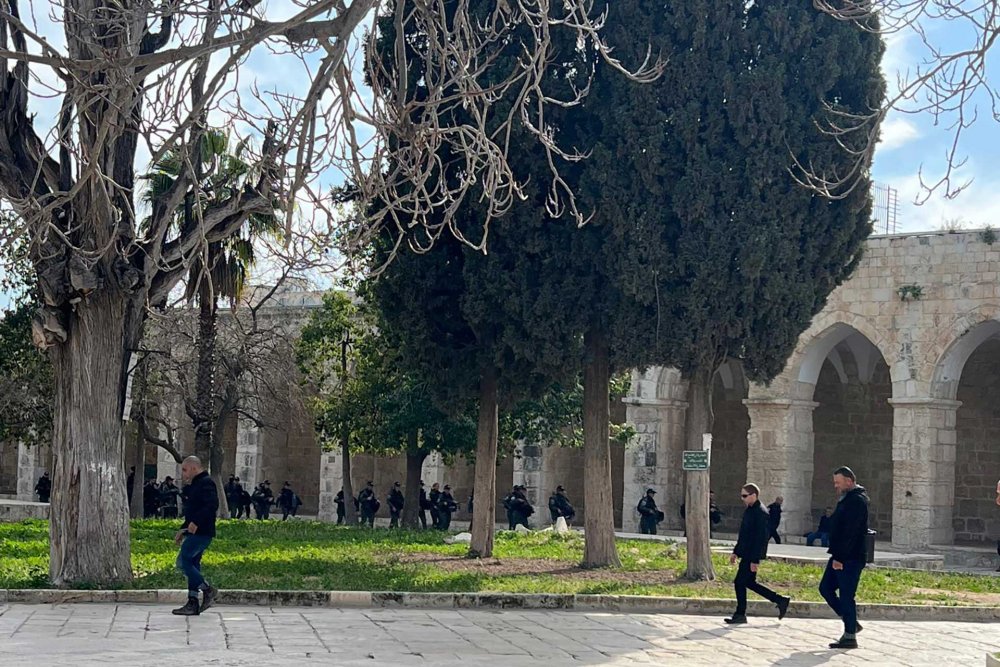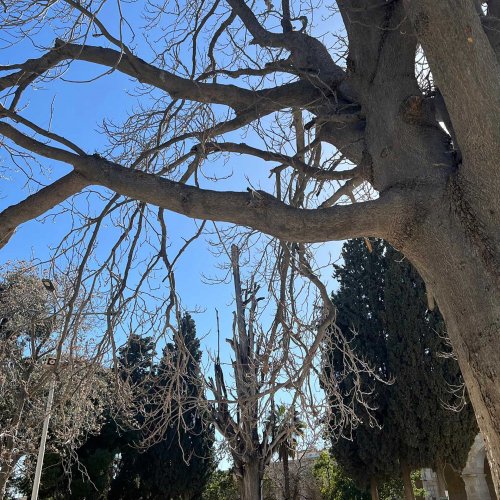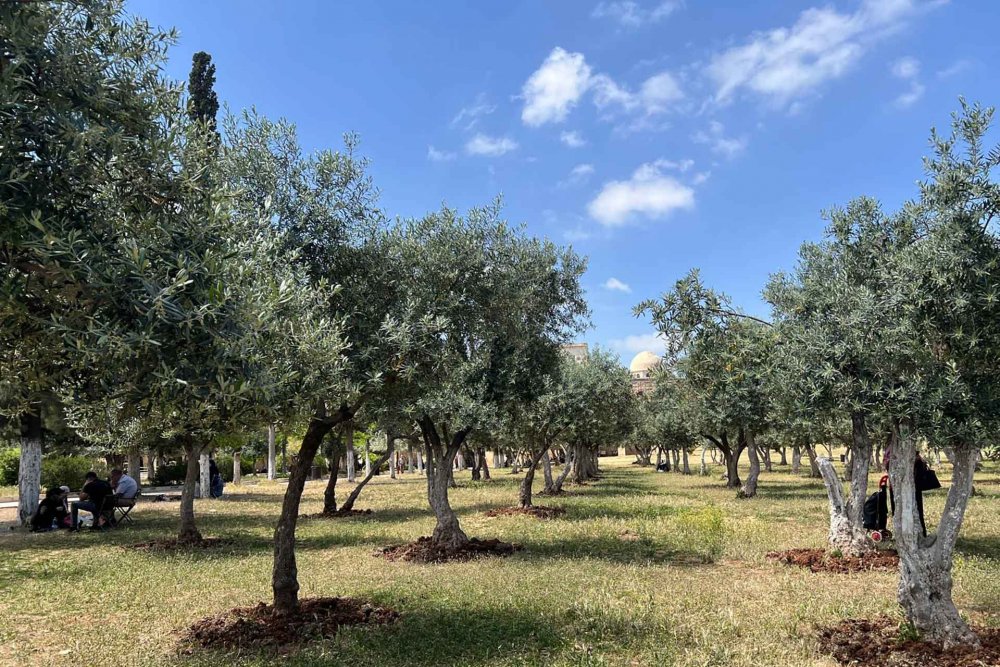For Fathi al-Wawi (Abu Anas), the head of agriculture at al-Aqsa Mosque, the trees are also a source of strong emotions. He knows every tree in the Haram al-Sharif, its history and age, he told Jerusalem Story. “Some of the olive trees that I planted 40 years ago in front of the Sharia Court (which was seized by the Israeli Border Guard and turned into a headquarters for its forces) at the entrance to Bab al-Silsila today have become large and provide shade for dozens of worshippers. I feel unfortunate when I see a tree that has begun to age and its branches have begun to dry, but this is life, and every twig, every branch, and every tree in the compound must be taken care of.”3
Abu Anas is frustrated because his hands are often tied by the strange restrictions imposed by the Israeli authorities. “The most important thing that must be done immediately is to prune the trees and remove the dry branches to lighten their weight and grow new branches to continue life, but this work is not easy in al-Aqsa Mosque compound, as it needs special coordination and arrangement between the waqf administration and the Israeli police, which finds ways to hinder our work in the agriculture department and even refuses to allow us to plant any new trees.”
Abu Anas becomes emotional when he talks about the trees at the compound. He says that any tree that falls and dies is a great loss for the mosque, for us, and for Jerusalem, because no other tree is planted to replace the one that died. “Every tree that disappears hurts my heart. The trees and I have been together for decades.”





